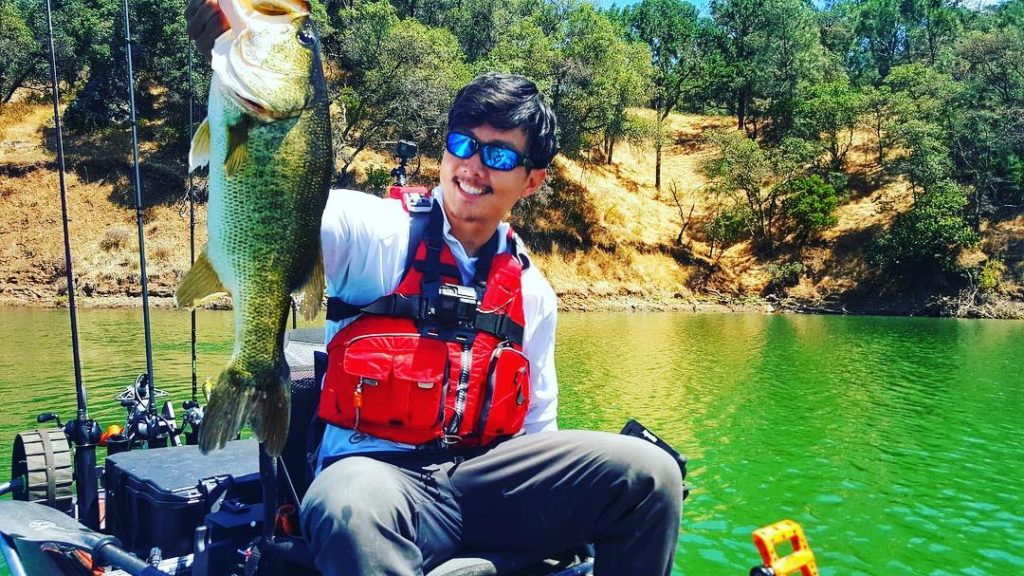
The bass fishing season is winding down for most parts of the country and only the true die hards are the ones braving the water. Late fall and early winter bass fishing (assuming you have open water) traditionally calls upon your slower moving baits that you can creep along the bottom. Baits such as jigs, worms and even big swimbaits fit the bill. For me, the drop shot worm is a technique that continues to shine and gets bit this time of year when other baits won’t. That being said, there are 3 modifications I will make to my drop shot rig when targeting late season bass.
What is the drop shot rig?
To start, the drop shot rig is a light tackle application used on a spinning reel and rod setup. You’ll be using light line and a light wire hook that will have about a foot of line after the hook with a weight. This will essentially allow you to cast your bait out, let the weight hit the bottom, and move/twitch your bait in place while maintain its position via the weight. Some people will fish it this way, while others will drag it along the bottom or even let the bait just sit there. This time of year, I feel, the slower the better. I will typically cast my rig out, let it hit the bottom and every 8-10 seconds give it a small twitch. Yes, the slower, the better!
My Go-To Drop Shot Setup

I opt for 15 pound braided line as my main line with a 3-4 foot 12 pound fluorocarbon leader. The braid has minimal stretch and will allow you to detect bites easier (especially when fishing deep) and the fluorocarbon will be more transparent in the water as it has the same refractive index as the water (i.e. it’s harder for the fish to see).
3 Modifications
Now let’s get into the 3 modifications… There are many variations of the drop shot rig but I will make 3 direct changes to mine this time of year. First off, I will make the leader much shorter. This means the distance from the hook to the weight. I will make this about 5-7 inches. Again, bass are typically more bottom oriented this time of year and having your bait closer to the bottom will keep it in the strike zone longer. The second modification I will make is adding a heavier drop shot weight. I go up to a 1/2 oz cylinder weight this time of year. I do this because you’ll mainly be fishing this bait in more than 20 foot of water as bass tend to go deeper this time of year. A bigger weight means getting the bait down faster and allowing you to put your bait in the face of a bass quicker. A bigger weight also gives me more sensitivity in feeling what’s on the bottom as well as detecting bites. And the last modification I will make is a color change to the bait. Green pumpkin is hard to beat in any type of soft plastic, but, this time of year I do believe another color shines. That would be baits with a white or pearl color to them. As the water temps continue to drop, there will be a die off of shad and other bait fish. A lot of these bait fish will be struggling along the bottom and a white or pearl colored worm will mimic the forage perfectly for a hungry bass.

So there it is. If you are still braving the elements and trying to catch those green fish we love so much, try these modifications to your drop shot rig and see if it puts more fish in the yak. I know it will be a staple for me through the next few months and when nothing else is working, this will be my go to. As always, stay safe out there and tight lines!
-Greg Blanchard
About Greg Blanchard: Greg has taken the YouTube kayak fishing community by storm over the past few years. His approach to kayak fishing technique is unique and powerful. Greg fishes from a Native Watercraft Titan Propel 10.5 as his primary craft. You can subscribe to Greg’s YouTube Channel by clicking the button below.











